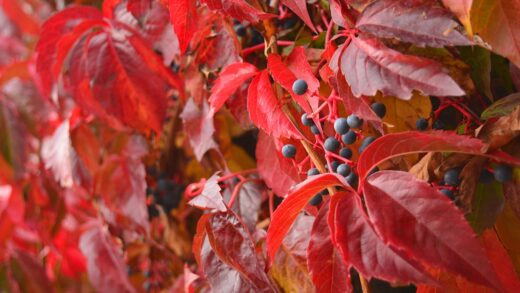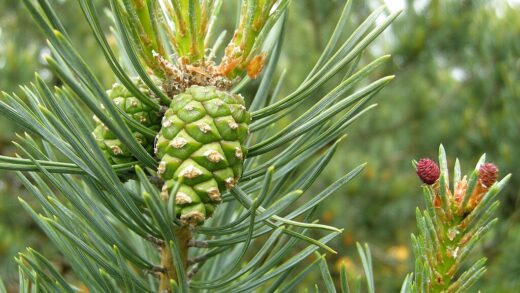Pruning and regular grooming are essential practices for maintaining the health, appearance, and blooming potential of an African violet. While these plants do not require the kind of hard pruning associated with woody shrubs, a consistent routine of selective trimming and shaping is vital. The primary goals of pruning are to encourage a symmetrical, single-crowned rosette shape, to remove old and unhealthy foliage, and to direct the plant’s energy towards producing new growth and abundant flowers. This process, often referred to as “grooming,” is not a one-time task but rather an ongoing part of the plant’s care regimen. A well-groomed plant is not only more aesthetically pleasing but is also healthier and less prone to pests and diseases.
The classic, desirable form for most standard African violet varieties is a single, central growing point (the crown) from which leaves radiate outwards in a flat, symmetrical, wheel-like pattern. To achieve and maintain this shape, it is crucial to remove any secondary crowns, known as “suckers,” as soon as they appear. Suckers are small plantlets that emerge from the main stem, often in the axils where the leaf stems join the main stem. If left to grow, they will compete with the main crown for light, water, and nutrients, resulting in a crowded, multi-headed plant that has a messy appearance and produces fewer flowers.
Beyond removing suckers, regular pruning involves the removal of the oldest, outermost ring of leaves. As an African violet grows, it continuously produces new leaves from the central crown. The older leaves at the base of the plant will naturally begin to lose their vigor, fade, and eventually wither. Removing these leaves before they start to decline not only keeps the plant looking fresh and tidy but also improves air circulation around the base, which helps to prevent fungal diseases. This practice also encourages the plant to focus its energy on its new, productive growth.
Proper sanitation is paramount when pruning your plants. Always use clean hands and sterile tools to prevent the potential spread of diseases from one plant to another. Small suckers and spent flower stems can often be removed carefully with your fingertips or a specialized tool. For removing larger leaves, a clean, sharp craft knife or razor blade provides a precise cut. Making a clean cut close to the main stem will help the wound to heal quickly and minimize the risk of infection.
Removing suckers for a single crown
Maintaining a single-crowned plant is fundamental to achieving the classic, show-quality African violet form. Suckers are the primary challenge to this symmetry. A sucker can be identified as a tiny cluster of four leaves growing from the side of the main stem, whereas a flower stalk (peduncle) emerges as a single, leafless stem. It is important to learn to distinguish between the two, as you do not want to accidentally remove a developing flower stalk. Regular inspection of your plant will help you spot and remove suckers when they are very small and easy to manage.
More articles on this topic
To remove a small sucker, you can use a pointed tool like a pencil tip, a nut pick, or a specialized sucker-plucking tool. Gently insert the tip of the tool at the base of the sucker and carefully nudge it away from the main stem. It should pop off quite easily. Be careful not to damage the main stem or the adjacent leaf petioles in the process. Removing suckers when they are tiny is much less damaging to the parent plant than waiting until they become large and entangled with the surrounding foliage.
If a sucker has been overlooked and has grown to a significant size, it may be too large to simply pluck off. In this case, you may need to use a small, sharp knife to carefully cut it away from the main stem. Alternatively, if the sucker is large enough and has a few of its own leaves, you can treat it as a cutting for propagation. By removing it carefully, you may be able to pot it up as a new, independent plant, effectively cloning your original violet.
For trailing varieties of African violets, the rules are different. These varieties are specifically cultivated to produce multiple crowns and suckers, which allows them to develop their characteristic cascading or spreading habit. For these types of violets, you would not remove the suckers, but rather allow them to grow to create a full, lush plant. Therefore, it is important to know which type of African violet you are growing to apply the correct pruning and shaping techniques.
Pruning leaves to shape and rejuvenate
As an African violet grows, it is natural for the bottom rows of leaves to age. These leaves may become yellow, limp, or simply smaller and less vigorous than the newer growth. A general rule of thumb is to maintain about 3 to 5 rows of healthy, vibrant leaves on a standard-sized plant. Regularly removing the lowest, oldest row of leaves, perhaps one or two leaves every few weeks, is a good maintenance practice. This encourages the plant to continuously produce new leaves from the top, keeping the plant perpetually youthful and vigorous.
More articles on this topic
When removing a leaf, it is best to cut the petiole (leaf stem) as close to the main stem as possible. Leaving a long stub behind can be unsightly and can create a potential site for rot or disease to enter the plant. After removing a row of outer leaves, you may expose a section of the main stem, creating a “neck.” This is a common occurrence and is a sign that the plant needs to be repotted. The repotting process involves lowering the plant in the pot so that the bare neck can be buried under fresh soil, which will encourage new roots to grow from it.
Pruning can also be used to correct an asymmetrical plant. If a plant has grown in a lopsided manner, often due to uneven light, you can strategically remove some leaves to help restore its balance. For example, if one side of the plant is much larger and fuller than the other, you might remove one or two of the older leaves from the larger side. This can help to redirect the plant’s energy and, in combination with regular rotation, encourage more balanced growth over time.
Damaged leaves, such as those that are torn, have been scorched by the sun, or show signs of disease, should be removed immediately, regardless of their position on the plant. Removing damaged tissue promptly prevents the plant from wasting energy on trying to repair it and also eliminates potential entry points for pathogens. A clean plant with only healthy, intact leaves is a more resilient and robust plant overall.
Disbudding and deadheading
Deadheading, the practice of removing spent or faded flowers, is a simple but important grooming task. As soon as a blossom begins to wilt or turn brown, it should be removed. This prevents the plant from expending energy on producing seeds and instead encourages it to channel that energy into creating new flower buds. To deadhead, simply pinch or cut the individual flower stem off at its base, or remove the entire flower stalk (peduncle) once all the blossoms on it have faded.
Regular deadheading not only promotes more prolific and continuous blooming but also contributes to the overall health of the plant. Decaying flowers can be a breeding ground for fungal diseases like botrytis blight (gray mold), which can then spread to the leaves and crown of the plant. By keeping the plant free of decaying organic matter, you create a less hospitable environment for these pathogens, maintaining both the beauty and the health of your African violet.
Disbudding is a more advanced technique, primarily used by growers who are preparing a plant for a flower show. This involves systematically removing all flower buds and stalks for a period of several weeks or months leading up to the show. This practice allows the plant to direct all of its energy into producing a large, perfectly symmetrical rosette of foliage. Then, approximately 8-10 weeks before the show date, the grower stops disbudding, and the plant responds by producing a spectacular, simultaneous flush of blossoms all at once.
While disbudding is not necessary for the casual home grower, it can be a useful technique to rejuvenate a plant that is blooming weakly or has become exhausted. If a plant has been in constant, heavy bloom for a very long time, its foliage may start to suffer. Removing the buds for a month or so can give the plant a “rest” period, allowing it to replenish its energy reserves and focus on producing healthy new leaves. After this rest period, it will often return to blooming with renewed vigor.
Repotting to manage the “neck”
Over time, as you continually remove the lowest rows of leaves as part of your regular grooming routine, the main stem of the African violet will lengthen, creating a bare, trunk-like section between the soil and the lowest leaves. This is commonly referred to as a “neck.” A long neck is not only unattractive, but it can also make the plant unstable and top-heavy. This is a clear signal that the plant needs to be repotted to bury the neck and re-center the foliage.
The process of repotting to correct a neck is straightforward. First, gently remove the plant from its pot. With a clean, sharp knife, slice off a portion of the bottom of the root ball. The amount you remove should be roughly equal to the length of the exposed neck. This allows the plant to sit lower in the same pot without having to move up to a larger pot size. You can also gently scrape the dry, corky surface of the neck to expose the greener tissue underneath, which can help to stimulate new root formation.
Next, place a layer of fresh, soilless African violet mix in the bottom of the pot. Set the plant back into the pot so that the lowest row of leaves is level with the pot’s rim. The bare neck should now be completely below the rim. Fill in the space around the root ball with fresh potting mix, gently tapping the pot to settle the mix. The neck should be completely buried. This fresh soil will encourage new roots to sprout directly from the buried stem, revitalizing the plant and creating a more stable base.
After repotting, water the plant thoroughly, preferably by the bottom watering method, and allow it to drain completely. It is beneficial to provide a slightly more humid environment for a few weeks, perhaps by placing the plant in a clear plastic bag, to help it recover from the stress of the procedure. Do not fertilize the plant for at least four to six weeks, allowing the newly forming roots time to establish themselves in the fresh mix. This periodic repotting and burying of the neck, typically done once or twice a year, is a key rejuvenation technique that can keep an African violet healthy and beautiful for many years.


















